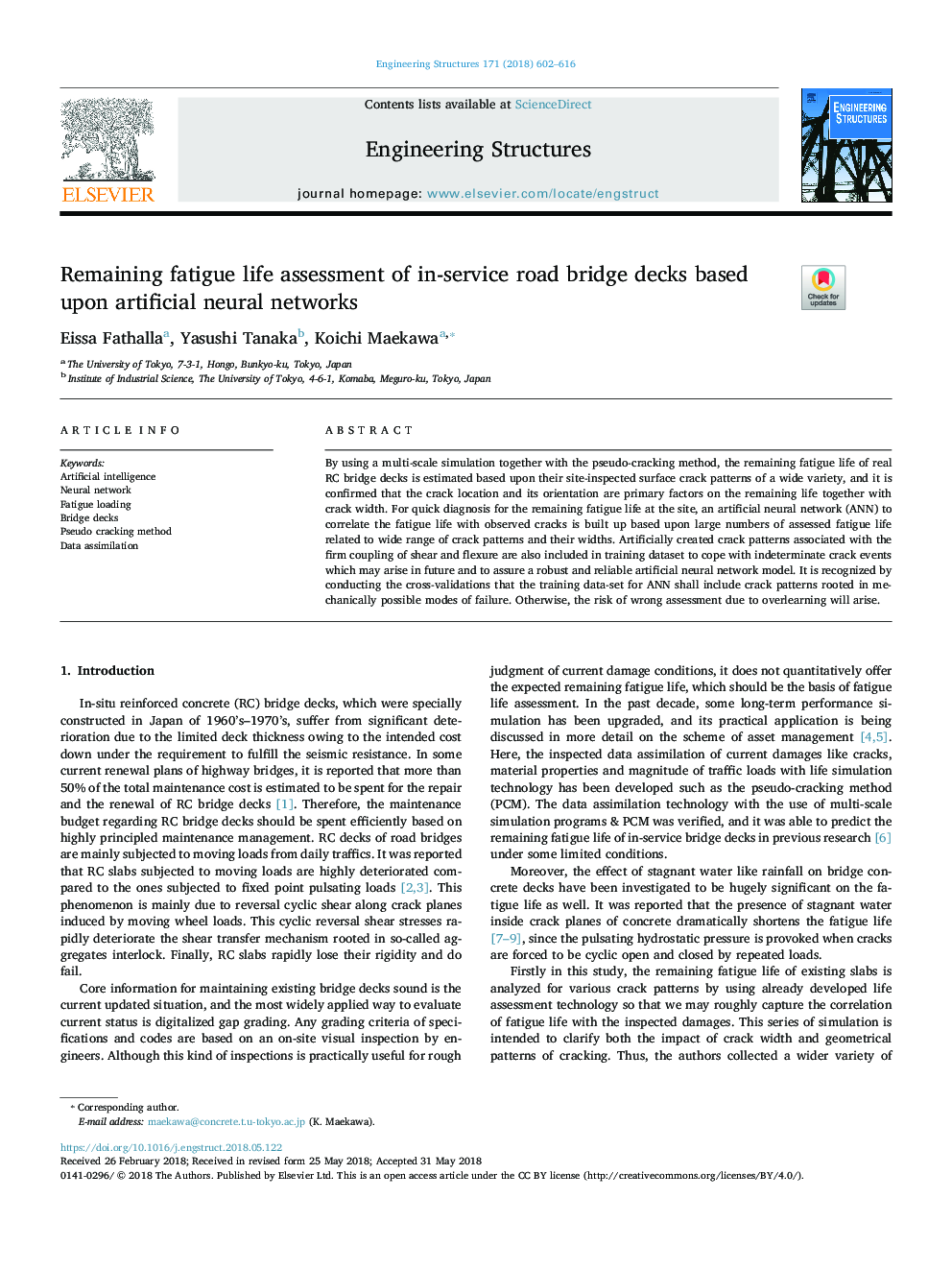| Article ID | Journal | Published Year | Pages | File Type |
|---|---|---|---|---|
| 6736388 | Engineering Structures | 2018 | 15 Pages |
Abstract
By using a multi-scale simulation together with the pseudo-cracking method, the remaining fatigue life of real RC bridge decks is estimated based upon their site-inspected surface crack patterns of a wide variety, and it is confirmed that the crack location and its orientation are primary factors on the remaining life together with crack width. For quick diagnosis for the remaining fatigue life at the site, an artificial neural network (ANN) to correlate the fatigue life with observed cracks is built up based upon large numbers of assessed fatigue life related to wide range of crack patterns and their widths. Artificially created crack patterns associated with the firm coupling of shear and flexure are also included in training dataset to cope with indeterminate crack events which may arise in future and to assure a robust and reliable artificial neural network model. It is recognized by conducting the cross-validations that the training data-set for ANN shall include crack patterns rooted in mechanically possible modes of failure. Otherwise, the risk of wrong assessment due to overlearning will arise.
Related Topics
Physical Sciences and Engineering
Earth and Planetary Sciences
Geotechnical Engineering and Engineering Geology
Authors
Eissa Fathalla, Yasushi Tanaka, Koichi Maekawa,
